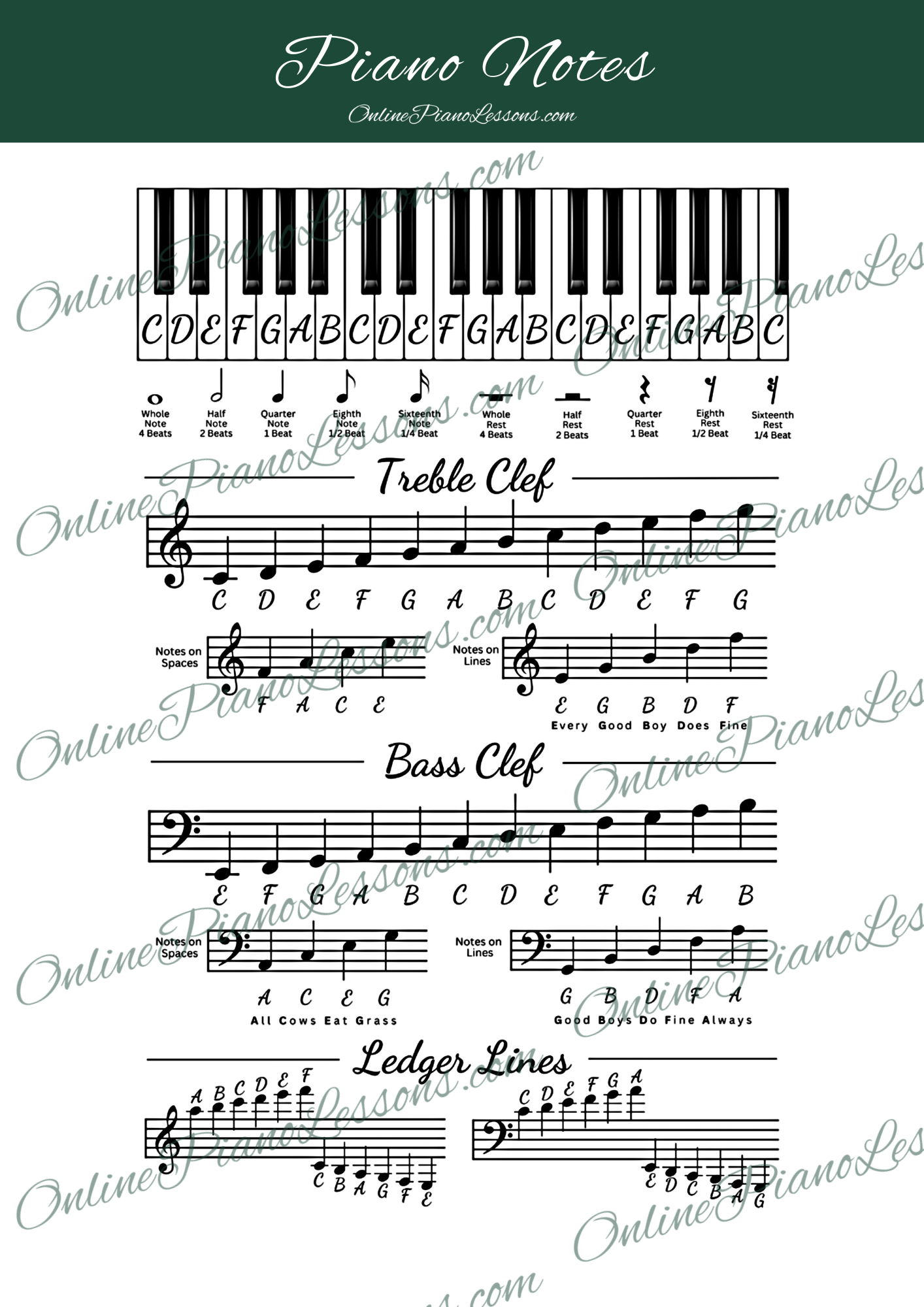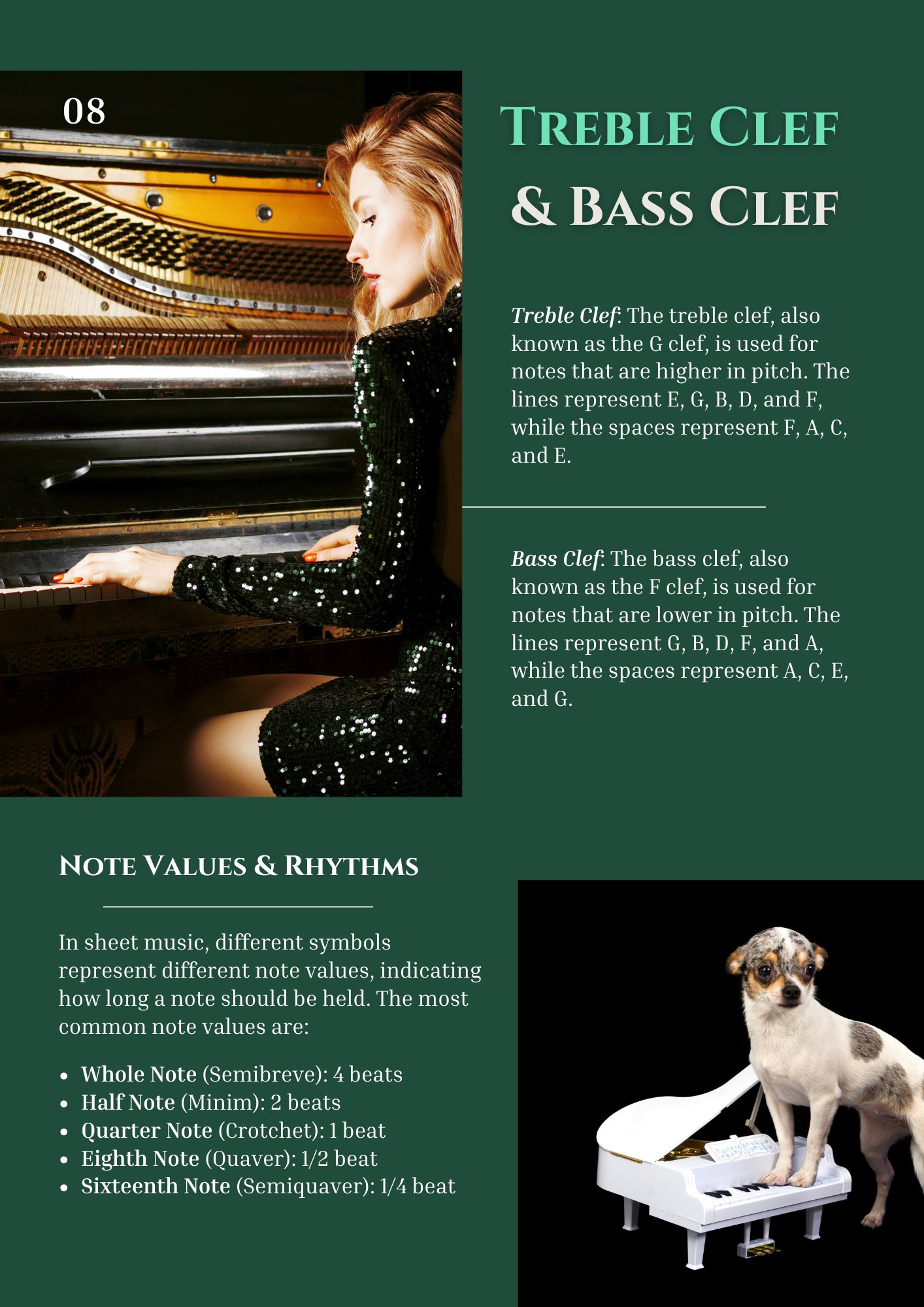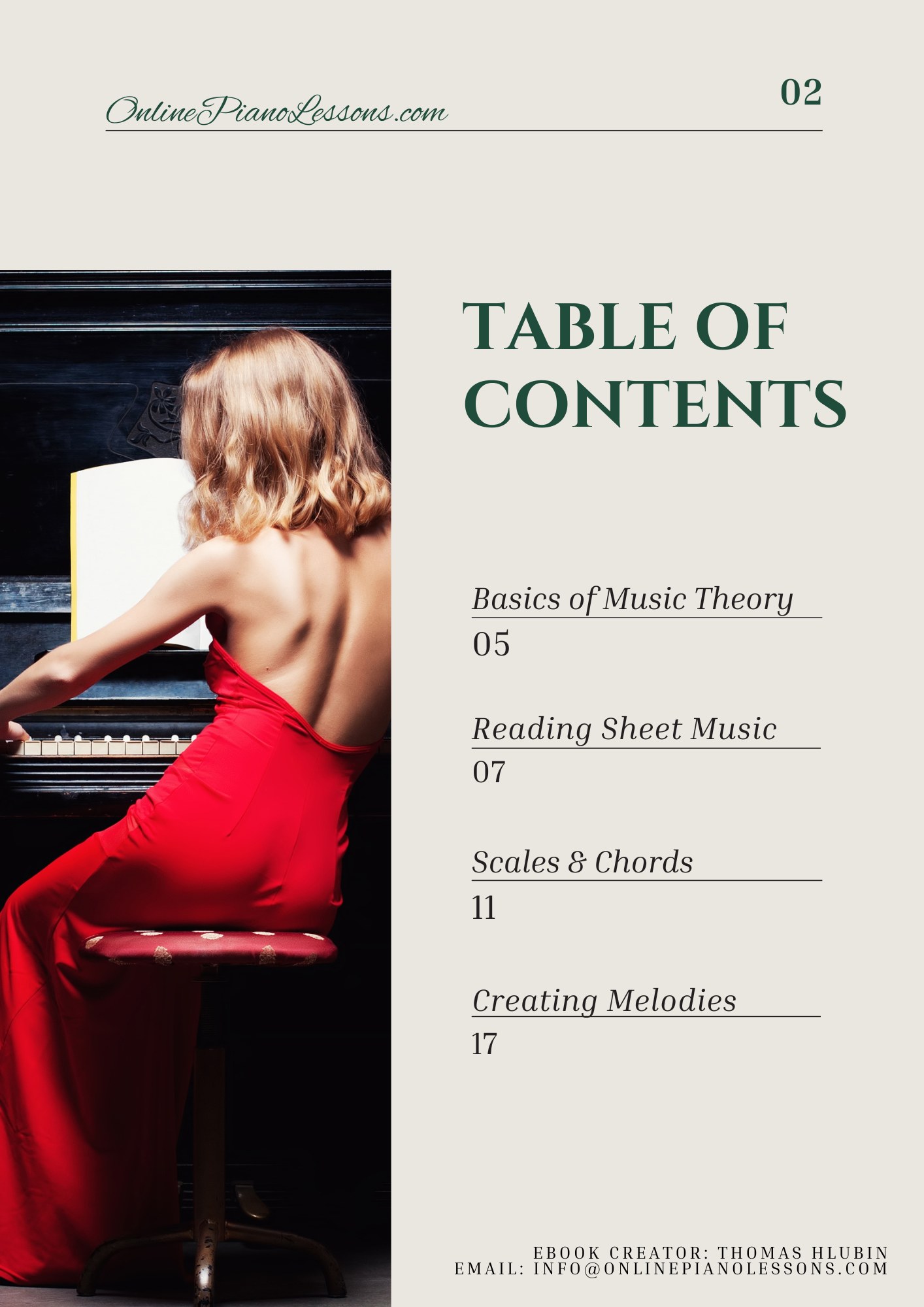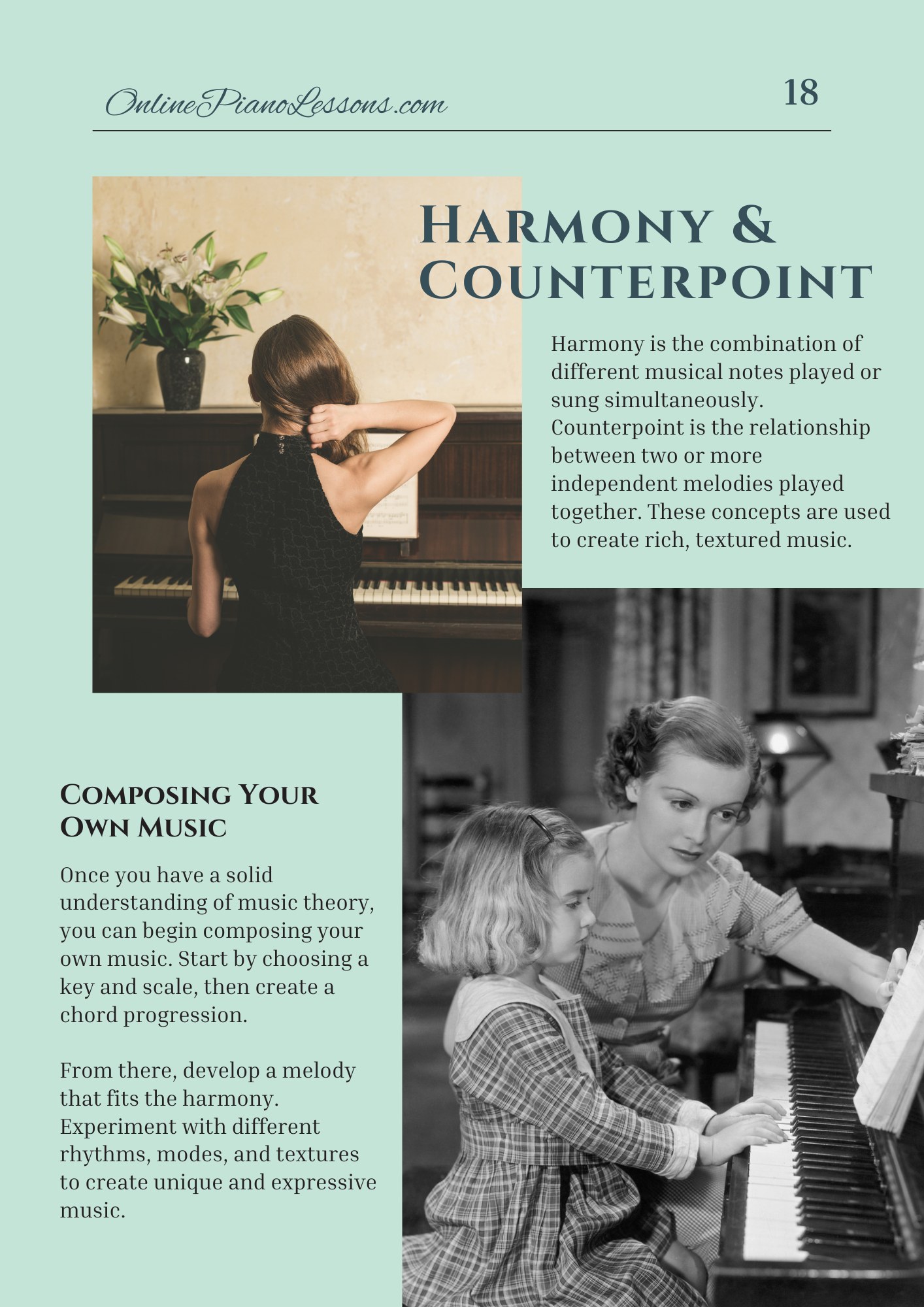The diminished scale is an indispensable—but sometimes misunderstood—tool for pianists. Whether you’re a jazz improviser, a classical pianist exploring chromatic harmony, or a composer looking for tension and release, diminished scales open up unique melodic and harmonic possibilities on the piano. This in-depth guide explains what diminished scales are, how they’re constructed, what they sound like, how to practice them on the piano, and how to use them musically.
What Is A Diminished Scale?
A diminished scale is an eight-note (octatonic) scale built from alternating whole steps and half steps. There are two common forms: the half–whole diminished scale and the whole–half diminished scale. On the piano, these two diminished scales produce different harmonic flavors and are used in different musical contexts.
- The half–whole diminished scale (H–W–H–W…): start with a half step, then alternate whole and half steps. This diminished scale is useful over dominant chords, especially altered dominants.
- The whole–half diminished scale (W–H–W–H…): start with a whole step, then alternate. This diminished scale is often used over diminished seventh chords and diminished tonal areas.
Because these diminished scales repeat after three semitones due to symmetry, they create repeating pitch-class sets that give unique harmonic portability across the piano.
How The Two Diminished Scales Are Built
On the piano, building diminished scales is visual and pattern-driven.
- Example of a half–whole diminished scale starting on C:
C — C♯ — D♯ — E — F♯ — G — A — A♯ — (C)
Pattern: H — W — H — W — H — W — H — W - Example of a whole–half diminished scale starting on C:
C — D — E♭ — F — F♯ — G♯ — A — B — (C)
Pattern: W — H — W — H — W — H — W — H
Because each diminished scale contains four diminished seventh chords, the scale’s symmetry allows you to shift shapes up minor thirds and hear similar sonorities across the keyboard.
Why They’re Called “Diminished” And What Makes Them Unique
The name “diminished scale” comes from the scale’s close ties to diminished seventh harmony. Each of the diminished scales contains stacked minor thirds and diminished triads when you harmonize certain scale degrees. On the piano, these diminished scales naturally yield diminished-seventh arpeggios, which are built from minor thirds—hence the “diminished” label.
What makes diminished scales unique is their symmetry and their ability to outline multiple harmonic functions from a single scalar set. On the piano, that symmetry means a fingering or pattern learned in one place often maps neatly to others a minor third apart. This symmetry also produces ambiguous tonal centers, which is why diminished scales are often used to create tension or instability before a resolution.
What Diminished Scales Sound Like On The Piano
Diminished scales produce a tense, complex sound—bright, spiky, and full of chromatic color. On the piano they can sound:
- Mysterious and unstable when voiced as clusters or diminished arpeggios.
- Angular and jazzy when used over dominant chords with altered tensions.
- Ethereal or eerie when played as wide open, rhythmically suspended runs.
Because a diminished scale contains both minor thirds and tritone relationships, the scale can simultaneously suggest several different chords. When used tastefully, diminished scales can add dramatic color to a piano solo or composition without sounding purely atonal.
How Pianists Use Diminished Scales Musically
- Over altered dominant chords: Jazz pianists often use the half–whole diminished scale over V7 chords to emphasize b9, #9, and #11 tensions. For example, over G7, play the A♭ half–whole diminished scale to outline altered tensions.
- Over diminished-tonal areas: Use the whole–half diminished scale to outline diminished seventh chords and to create chromatic passing motion on the piano.
- As passing material: Diminished scales work beautifully as passing lines between diatonic chords; they add chromatic color and momentum.
- For modulation and pivoting: Because diminished scales map onto multiple chords a minor third apart, they can function as pivot collections for smooth modulations on the piano.
- In composition and orchestration: Composers use diminished scales to highlight suspense, danger, or instability. On the piano, thin voicings or widely spaced arpeggios can dramatize those moods.
Practical Fingerings And Technique For The Piano
Diminished scales can feel awkward initially because of frequent black-white key alternations and irregular thumb crossings. Here are practical tips for practicing diminished scales on the piano:
- Start slowly: Practice one octave hands separately, then together, focusing on evenness.
- Use consistent fingerings: For half–whole diminished starting on C, try right-hand fingering: 1–2–3–1–2–3–1–2 for the octave pattern, adjusting for comfort. For whole–half diminished, adapt standard scale fingering but be prepared to use extra thumb passes.
- Practice minor-third transpositions: Because the diminished scales repeat every minor third, practice the same pattern up minor thirds—this builds pattern memory for the piano.
- Arpeggio drills: Practice diminished seventh arpeggios extracted from the scale (e.g., C–E♭–G♭–A) to internalize chord-tone relationships.
- Rhythmic variations: Play the scale in triplets, duplets, dotted rhythms, and syncopations to develop control and musicality.
Aim for clarity: diminished scales sound best when the articulation is clean and the harmonic function is clear.
Exercises To Internalize Diminished Scales On The Piano
- One-octave half–whole diminished scale ascending and descending in all twelve starting notes.
- Practice the same diminished scale transposed up minor thirds (C → E♭ → F♯ → A → C).
- Arpeggio sequences: play diminished 7 arpeggios in root position and inversions.
- Create short motifs using alternating diminished scalar fragments and apply them over a dominant vamp (e.g., Cm7 – F7).
- Harmonize every other note of the diminished scale to create stacked triads and observe harmonic implications.
Daily focused practice (10–20 minutes) will make the textures feel natural on the piano.
Harmonization: Chords Derived From Diminished Scales
Diminished scales contain tones that generate diminished sevenths, dominant sevenths with altered tensions, and diminished triads. On the piano this means:
- Diminished seventh chords sit naturally inside both diminished scales and sound like central pivot chords.
- Altered dominant chords (e.g., V7b9, V7#9, V7#11) are easily outlined by the half–whole diminished scale.
- Triadic stacks and polychords appear when you pick alternate notes from the diminished scale; these yield intriguing coloristic voicings for accompaniment or orchestration on the piano.
Understanding these chordal relationships will help you choose when to use diminished scales musically rather than just as technical fireworks.
Common Pitfalls And How To Avoid Them
- Mechanical runs without musical direction: Don’t practice diminished scales only as speed drills—always phrase them musically.
- Overuse: Diminished scales are dramatic; use them to flavor moments, not to fill entire pieces.
- Ignoring fingerings: Poor fingering makes diminished patterns sound sloppy on the piano. Invest time in consistent fingerings.
- Neglecting harmonic context: Make sure the diminished scale matches the chordal function (half–whole over V7, whole–half over dim7, etc.).
Final Thoughts
Diminished scales are a powerful addition to your piano vocabulary. They combine symmetry, chromatic richness, and strong harmonic potential in a compact, transposable set. By practicing both the half–whole and whole–half diminished scales, learning suitable fingerings, and applying them in musical contexts—vamps, altered dominants, and diminished passages—you’ll unlock new sounds and expressive tools for your piano playing.
FAQ
Q: What is a diminished scale?
A diminished scale is an eight-note scale built from alternating whole and half steps. There are two common forms: half–whole and whole–half diminished scales.
Q: How many diminished scales are there?
Practically there are two distinct types—half–whole and whole–half—but across pitch classes the patterns repeat every minor third, so you’ll encounter multiple transpositions on the piano.
Q: What do diminished scales sound like on the piano?
They sound tense, chromatic, and symmetrical—excellent for creating altered dominant tension, eerie atmospheres, or tight diminished arpeggio textures.
Q: When should I use the half–whole diminished scale versus the whole–half diminished scale?
Use the half–whole diminished scale over dominant seventh chords with altered tensions, and use the whole–half diminished scale when working with diminished seventh chords or fully diminished tonality.
Q: Are diminished scales only for jazz pianists?
No. While jazz uses diminished scales frequently for improvisation, classical, film, and contemporary composers also use diminished scales on the piano for color and tension.
Q: How do I practice diminished scales efficiently on the piano?
Practice hands-separately, use consistent fingerings, transpose by minor thirds, drill diminished arpeggios, and always practice musical phrases, not just mechanical runs.
Q: Which pieces use diminished scales?
You’ll hear diminished scale colors in jazz standards, romantic piano works, film scores, and modern repertoire. The effect is universal: tension, instability, and chromatic color.

 Get Full Access (Only $5/mo)
Get Full Access (Only $5/mo)



 I love playing piano, creating new melodies and songs, and further developing my online piano course and making updates/additions to my site OnlinePianoLessons.com!
I love playing piano, creating new melodies and songs, and further developing my online piano course and making updates/additions to my site OnlinePianoLessons.com!  Now that is what I call fun!
Now that is what I call fun!





